The Stem
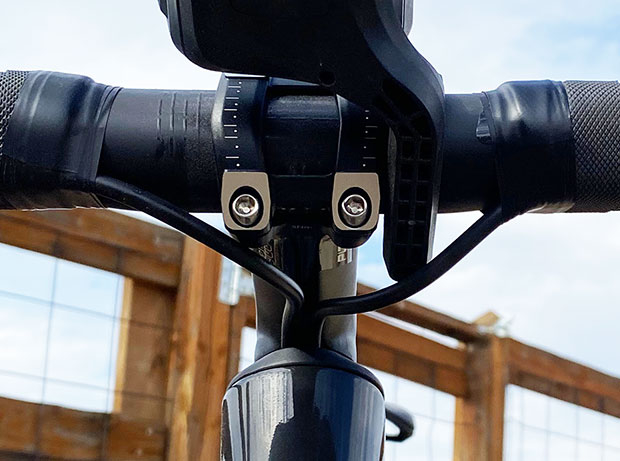
I’m writing today about that quality-of-life-improving new invention that will change – for the better – your time on the bike for as long as you continue to ride. Or, it would if that new invention was introduced today. In fact, it debuted on bikes at least a century ago and the bicycle “stem” is the most taken-for-granted part on your bike. If you have a stem on your bike. Removing the stem from the system is like an automaker placing a new, sexy bucket seat in its new car, but removing the capacity to adjust it back and forth. The value you get by putting stem and handlebar altogether in one piece is far outweighed by the function you lose.
This is not the case on tri bikes. There’s plenty of adjustability and the only unadjustable part of a tri bike is the length of the pursuit position and even that’s frequently adjustable depending on the bike. That’s not a big deal, because the aero position is primary. On road and gravel bikes all the hand positions are on the road bars and fixing that length (and making the height barely adjustable) means you’re riding a motorcycle. The reason motorcycles don’t need as much adjustability is that the ergonomics of pedaling are not contemplated. You’re not the motor on a motorcycle. Once you become the motor, how you fit and sit aboard the vehicle determines your comfort and power. Hence the need for a stem.
Why is it that once we get something really important working smoothly – marriages, democracies, the planet on which we live – we go and blow it up? Bicycle stems are a tiny version of that paradigm.
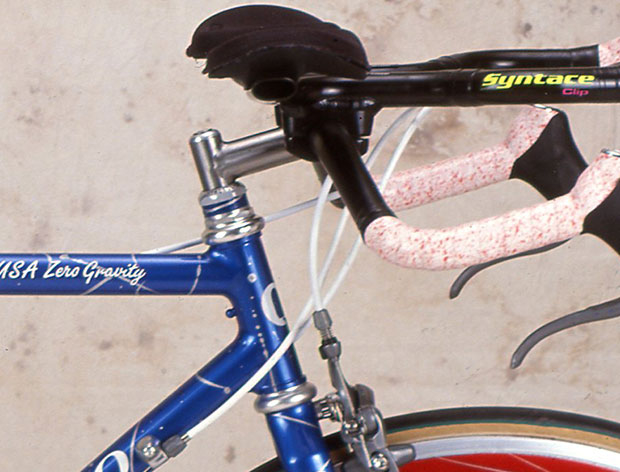
Stems weren’t always so user friendly. When I first started cycling, and when I began making bikes, the stem was hard to wrangle. Back then stems had quills (they were shaped like a 7), with wedge bolts that fixed the stem inside steel fork steer columns.
You can see on one of my bikes from around 1990 the stem we used (above), and three things were notable about that stem. First, it added extra height to the system because headset cups were needed above and below the head tube. Second, you see the quill of which I wrote: the stem is all one piece from the horizontal (or slightly up-tilted) extension back to the vertical quill that fits inside the steerer. And third, if you look at a close up from the pic below you’ll see that there is no “faceplate.”
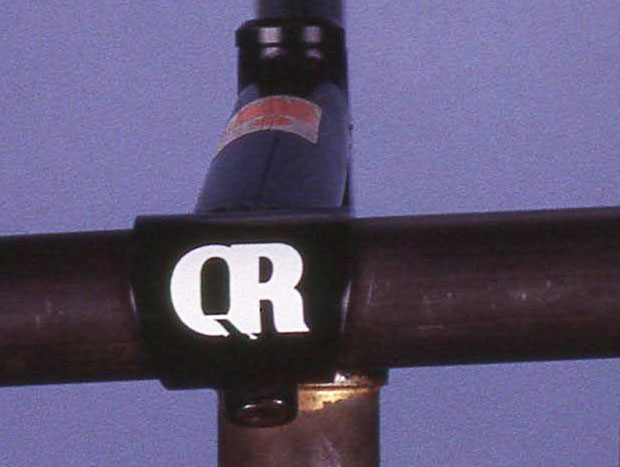
What I mean is, you threaded the handlebar through the clamp on the stem and if the handlebar’s curves made it unthreadable the trick was to take out the bolt that pinched the stem clamp together, thread it backwards, and place a penny as a stopper. That expanded the stem clamp. It was a pain in the arse. (The image above is from the stem on our testing rig back in the early 1990s and you can see the pinch bolt on the underside of the handlebar clamp.)
We saw two rapid improvements to the stem. Both came into existence, it seems to me, in the early 1990s, but I might be off a little on that. One is the removable faceplate. This made mounting handlebars to stems really easy. If you wanted to change your cockpit length you could put a new stem on your bike without stripping one side of the handlebar of shifter and tape. Faceplates with 4 bolts are now the norm, such as you see on this Profile Design ZEROSEVEN stem below.
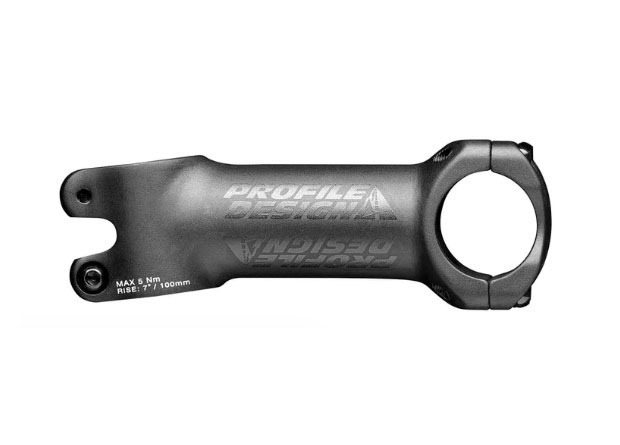
The second was the “threadless headset” and this is the current alternative to quill-style stems. You simply bolt the stem onto the fork steer column. That was a dodgy process at first, because steer columns were very heavy. Steel steerers gave way to aluminum, and then to carbon, but some bike makers hadn’t yet increased the diameter of the steerer to accommodate carbon as a material. Over the past decade or more broken steerers are rare to nonexistent. The stem was perfected. Almost. You see on the stems herein, like the Zipp Service Course stem below, there are no more quills. All stems attach to the steer columns virtually all the time.
The final improvement to this system was the internal or integrated headset and by this we mean the headset largely disappears as a *thing*. The only thing that remains of the traditional headset are the top and bottom bearings, a centering ring, some dust covers and a top cap. What used to be headset cups are gone and sealed bearings sit inside your bike’s head tube. This, finally, is an optimized system. Almost.
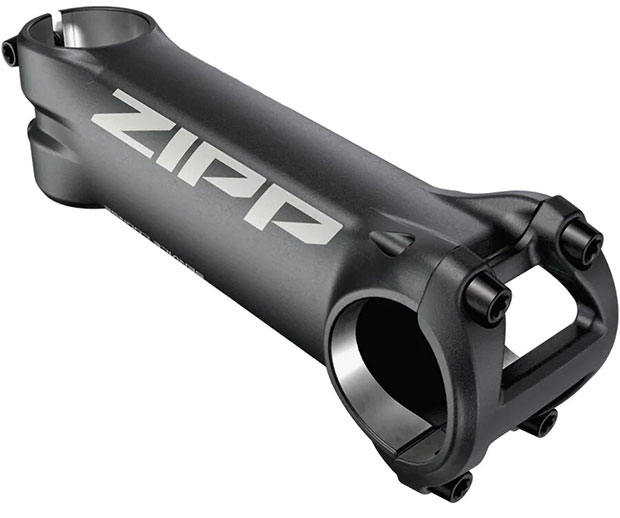
What bike makers decided is that they can’t make the frame any better, really. They can’t make it lighter. Or much lighter. They can make it stiffer but certain brands, like Cervelo, went through their stiffer-is-always-better period and retreated to bikes that are appropriately stiff. So, what was left (apparently) was aero, and all kinds of things were sacrificed in the fight for aero. Including the stem.
The idea was to get rid of all the exposed wires, hoses, cables. There’s a number of ways to do that. One is to run everything internally, but you can do that without getting rid of the stem. On my recent piece on how I chose my road bike I showed you the ACR system by FSA (pictured below). ENVE makes a similar system (very stylish and functional). Cervelo does as well, and you can use that system with any of its road and gravel bikes. Lotsa bike makers have that.
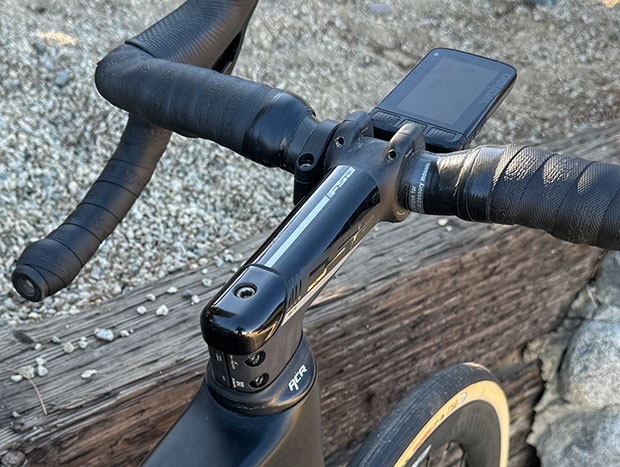
But that’s still not ideal, in my book, because you still have to decable the hydraulic housing to change the stem and that’s a big hassle. Cannondale has something called the Knot system and I’ll embed a video by a fellow who demonstrates this and in this case he used that Cannondale system on his Trek road bike to pretty darned good success.
With this system you don’t run the hoses through the stem, but it sure looks like you do. My Cervelo R5 road bike uses a headset top cap with holes in it that accept the hydraulic lines into the frame (see the image at the very top of this page). Mind, I’m not against these lines passing through the frame. I’m slightly against them passing through the stem. But what I’m entirely against is the loss of the detachable stem.
The Knot system is about as close as one can come to all the benefits of aero with none of the losses, as that Knot stem attaches to the handlebar like the saucer to the engine of the Starship Enterprise, but Lord knows Jim, McCoy, Spock and everyone else would’ve been dead many times over if that saucer didn’t separate. What I’m not 100 percent down with is the Hydraulic line running through the Knot system’s handlebar. The perfect system has the hydraulic line running adjacent to the handlebar, inside an indentation in the handlebar or if structural integrity convinces you otherwise then fine, just tape over it and call it good. Then stems and handlebars are easy to change. (PRO, Shimano's accessories brand, makes very nice stems like this one below.)
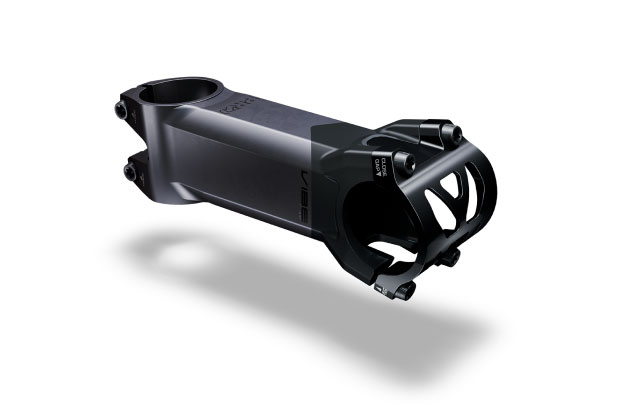
The reason so many unadjustable bikes are sold these days is that the larger bike brands have – as a rule – never understood bicycle fit. They have been more animated by weight, stiffness, aerodynamics, anything you can measure. This allows them to tell you that you should buy their bike because it’s 12 percent stiffer, lighter, more aero. Or 16 percent. Anything you can measure. If they can’t measure it they can’t sell it – they think – because the only thing you, the buyer, responds to is a sexy metric. But there are certain engineers out there, like Damon Rinard of Cannondale, who understands that road bikes should be light, should be aero, but can be those things without sacrificing your ability to hit your fit coordinates. Hence the Knot system on Damon’s race bikes. Companies that make unadjustable bikes just lack the bike fit gene, and that’s kind of what it is. You either have fit and handling as a part of your corporate DNA or you don’t.
So let me put it to you. Does your road bike fit you? Are you too stretched out? Too cramped? Are your handlebars a little too high, or low? If so, how hard it is to make a change? What fixes your fit problem is the stem, and that’s been the case for more than 100 years of cycling. Perhaps all of cycling will go the way of the ebike, which will get more and more powerful, lighter and lighter, and you won’t really have to pedal much anymore. In that case fine, the ability to hit fit coordinates won’t matter, as you’ll basically be riding a motorcycle. Until then, I just won’t buy a road or gravel bike that I can’t easily adjust, because cycling matters to me.
Fortunately, with Cervelo's R5 and its well-done re-release of the Soloist, and bikes like the Specialized Aethos, the stem becomes a central part of the system. For sure, it's bikes made for climbing at the forefront of this. But few are going to buy a bike like this, appreciate the freedom to alter the bike to fit, only to accept a non-adjustable aero bike. The integrated stem/bar has peaked, and I hope it's on the decline.



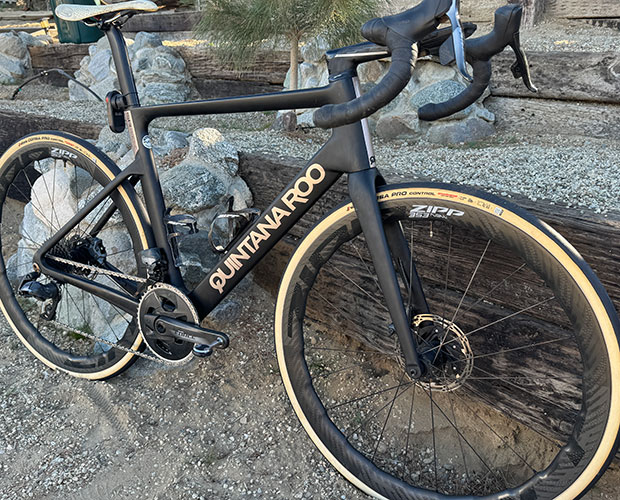
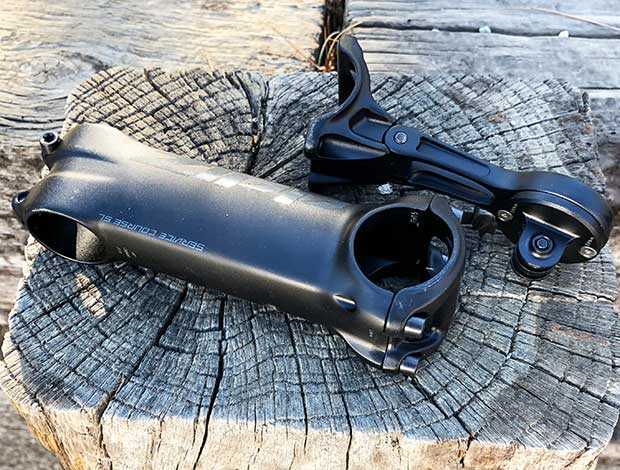
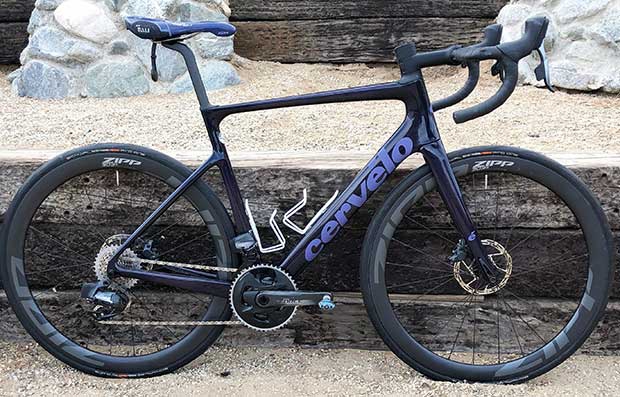

Start the discussion at forum.slowtwitch.com